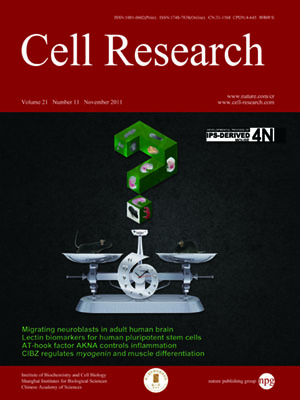
Advanced Search
Submit Manuscript
Advanced Search
Submit Manuscript
Volume 21, No 11, Nov 2011
ISSN: 1001-0602
EISSN: 1748-7838 2018
impact factor 17.848*
(Clarivate Analytics, 2019)
Volume 21 Issue 11, November 2011: 1634-1637
Man Tong1,5,*, Zhuo Lv1,5,*, Lei Liu1,*, Hui Zhu2,*, Qin-Yuan Zheng1,5,*, Xiao-Yang Zhao1, Wei Li1,5, Yi-Bo Wu2, Hai-Jiang Zhang1, Hua-Jun Wu3,5
1State Key Laboratory of Reproductive Biology, Institute of Zoology, Chinese Academy of Sciences, Beijing 100101, China
2State Key Laboratory of Reproductive Medicine, Nanjing Medical University, Nanjing 210029, China
3Institute of Genetics and Developmental Biology, Chinese Academy of Sciences, Beijing 100101, China
4Shanghai Institute of Medical Genetics, Shanghai Children's Hospital, Shanghai Jiao Tong University, Shanghai 200040, China
5Graduate School, The Chinese Academy of Sciences, Beijing 100049, China
6Institute of Medical Science, Shanghai Jiao Tong University School of Medicine, Shanghai 200025, China
Correspondence: Qi Zhou, Jia-Hao Sha,(qzhou@ioz.ac.cn; shajh@njmu.edu.cn)
Cell Research (2011) 21:1634-1637. doi:10.1038/cr.2011.143; published online 30 August 2011